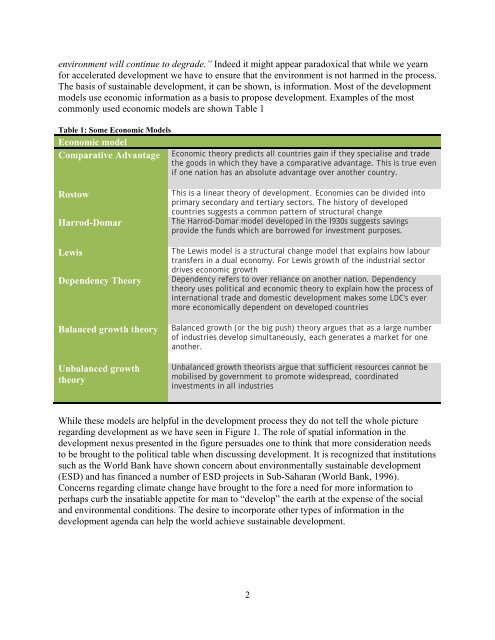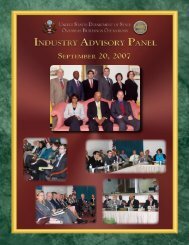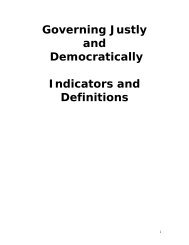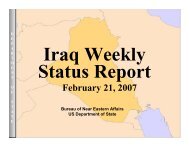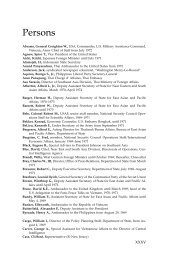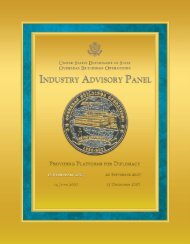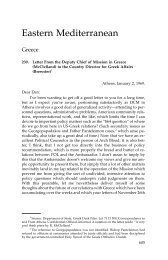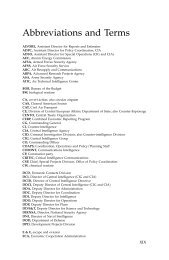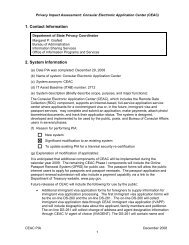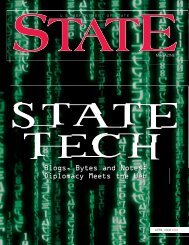Paper - Association of American Geographers
Paper - Association of American Geographers
Paper - Association of American Geographers
You also want an ePaper? Increase the reach of your titles
YUMPU automatically turns print PDFs into web optimized ePapers that Google loves.
environment will continue to degrade.” Indeed it might appear paradoxical that while we yearn<br />
for accelerated development we have to ensure that the environment is not harmed in the process.<br />
The basis <strong>of</strong> sustainable development, it can be shown, is information. Most <strong>of</strong> the development<br />
models use economic information as a basis to propose development. Examples <strong>of</strong> the most<br />
commonly used economic models are shown Table 1<br />
Table 1: Some Economic Models<br />
Economic model<br />
Comparative Advantage Economic theory predicts all countries gain if they specialise and trade<br />
the goods in which they have a comparative advantage. This is true even<br />
if one nation has an absolute advantage over another country.<br />
Rostow<br />
Harrod-Domar<br />
Lewis<br />
Dependency Theory<br />
This is a linear theory <strong>of</strong> development. Economies can be divided into<br />
primary secondary and tertiary sectors. The history <strong>of</strong> developed<br />
countries suggests a common pattern <strong>of</strong> structural change<br />
The Harrod-Domar model developed in the l930s suggests savings<br />
provide the funds which are borrowed for investment purposes.<br />
The Lewis model is a structural change model that explains how labour<br />
transfers in a dual economy. For Lewis growth <strong>of</strong> the industrial sector<br />
drives economic growth<br />
Dependency refers to over reliance on another nation. Dependency<br />
theory uses political and economic theory to explain how the process <strong>of</strong><br />
international trade and domestic development makes some LDC's ever<br />
more economically dependent on developed countries<br />
Balanced growth theory Balanced growth (or the big push) theory argues that as a large number<br />
<strong>of</strong> industries develop simultaneously, each generates a market for one<br />
another.<br />
Unbalanced growth<br />
theory<br />
Unbalanced growth theorists argue that sufficient resources cannot be<br />
mobilised by government to promote widespread, coordinated<br />
investments in all industries<br />
While these models are helpful in the development process they do not tell the whole picture<br />
regarding development as we have seen in Figure 1. The role <strong>of</strong> spatial information in the<br />
development nexus presented in the figure persuades one to think that more consideration needs<br />
to be brought to the political table when discussing development. It is recognized that institutions<br />
such as the World Bank have shown concern about environmentally sustainable development<br />
(ESD) and has financed a number <strong>of</strong> ESD projects in Sub-Saharan (World Bank, 1996).<br />
Concerns regarding climate change have brought to the fore a need for more information to<br />
perhaps curb the insatiable appetite for man to “develop” the earth at the expense <strong>of</strong> the social<br />
and environmental conditions. The desire to incorporate other types <strong>of</strong> information in the<br />
development agenda can help the world achieve sustainable development.<br />
2


